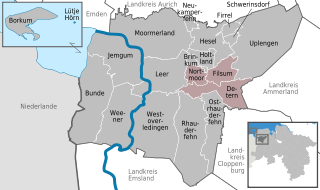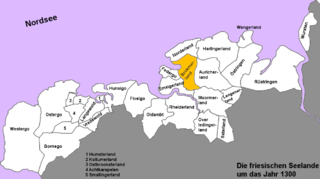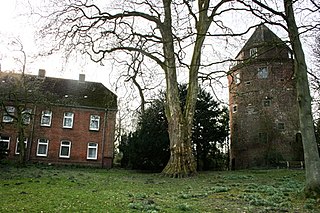
In physics, the kinetic energy of an object is the energy that it possesses due to its motion. It is defined as the work needed to accelerate a body of a given mass from rest to its stated velocity. Having gained this energy during its acceleration, the body maintains this kinetic energy unless its speed changes. The same amount of work is done by the body when decelerating from its current speed to a state of rest.

The ideal gas law, also called the general gas equation, is the equation of state of a hypothetical ideal gas. It is a good approximation of the behavior of many gases under many conditions, although it has several limitations. It was first stated by Benoît Paul Émile Clapeyron in 1834 as a combination of the empirical Boyle's law, Charles's law, Avogadro's law, and Gay-Lussac's law. The ideal gas law is often written in an empirical form:
This gallery of sovereign state flags shows the national or state flags of sovereign states that appear on the list of sovereign states. For other flags, please see flags of active autonomist and secessionist movements, flags of extinct states and gallery of flags of dependent territories. Each flag is depicted as if the flagpole is positioned on the left of the flag, except for those of Iran, Iraq and Saudi Arabia which are depicted with the hoist to the right.

Jümme is a collective municipality (Samtgemeinde) in the district of Leer in the German state of Lower Saxony. It is named after the River Jümme which flows through all three constituent communities. It has an area of 82.34 km² and a population of 6,421. It is situated in the region of East Frisia. Along with the Samtgemeinde of Hesel, it is one of two in the district. It was formed in the wake of local government reform in 1973. Filsum serves as the administrative centre.
In linear algebra, an eigenvector or characteristic vector of a linear transformation is a nonzero vector that changes at most by a scalar factor when that linear transformation is applied to it. The corresponding eigenvalue, often denoted by , is the factor by which the eigenvector is scaled.

A capacitor is a device that stores electrical energy in an electric field. It is a passive electronic component with two terminals.
1651 Behrens, provisional designation 1936 HD, is a stony Florian asteroid from the inner regions of the asteroid belt, approximately 10 kilometers in diameter. Discovered by Marguerite Laugier in 1936, it was named after Johann Behrens.
Frisian rebellion may refer to the following:

The Brokmerland is a landscape and an historic territory, located in western East Frisia, which covers the area in and around the present-day communities of Brookmerland and Südbrookmerland. The Brokmerland borders in the east on the Harlingerland and in the north on the Norderland. The historic Brokmerland is usually written with only one "o". Occasionally one also finds the spelling "Broekmerland", while today's communities have chosen to spell the name with a double "o".
The Battle of Detern on 27 September 1426 marked the prelude to the East Frisian rebellion against the rule of the tom Brok family over East Frisia.

Ocko II tom Brok (1407–1435) was Chieftain of the Brokmerland and the Auricherland in East Frisia.

The tom Brok family were a powerful East Frisian line of chieftains, originally from the Norderland on the North Sea coast of Germany. From the second half of the 14th century, the tom Broks tried to gain control of East Frisia over the other chieftain families. The line of tom Brok died out in 1435.
Uko Fockena was an East Frisian chieftain of Moormerland and Emsigerland.

Stickhausen Castle is located on the western edge of the village Stickhausen, a district of the East Frisian municipality Detern in the Landkreis of Leer in Lower Saxony.

The Aper Tief is a stream in Lower Saxony, Germany.
The Saxon feud was a military conflict in the years 1514–1517 between the East Frisian Count Edzard I, 'West Frisian' rebels, the city of Groningen, and Charles II, Duke of Guelders on the one hand and the Imperial Frisian hereditary governor George, Duke of Saxony – replaced by Charles V of Habsburg in 1515 – and 24 German princes. The war took place predominantly on East Frisian soil and destroyed large parts of the region.
Otto II, Count of Rietberg was the ruling Count of Rietberg from 1365 until his death.
Nicholas II of Tecklenburg was the ruling Count of Tecklenburg from 1388 until his death.
John V, Count of Hoya, nicknamed the Pugnacious, or the Wild, was the ruling Count of Hoya from 1426 until his death. He was the son of Count Eric I of Hoya and his wife Helen, the daughter of Duke Magnus II Torquatus. His brother Albert was Bishop of Minden. His brothers Eric and Otto were administrators of Münster and Bremen respectively.














